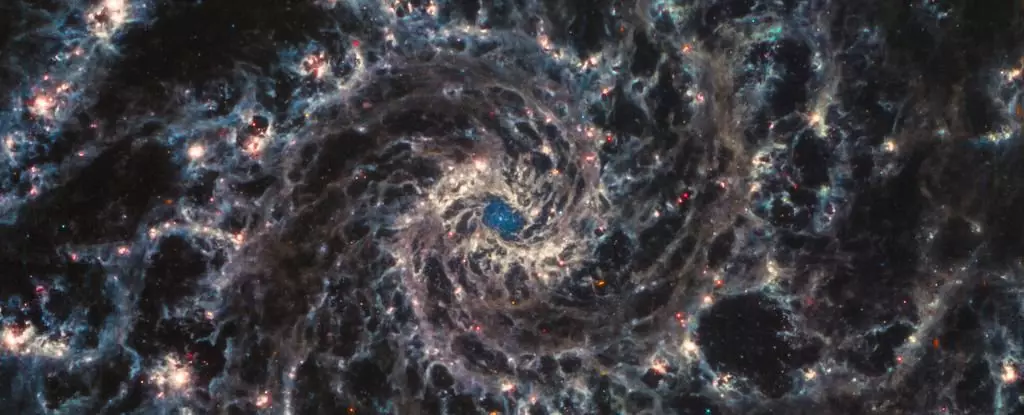Three years ago, on a momentous day in the history of astronomy, the James Webb Space Telescope (JWST) was launched into the void of space. This groundbreaking instrument, representing 30 years of development, is not just the largest telescope ever deployed but also the most powerful one. Its primary mission is to provide unprecedented insights into the cosmos, revealing details about the formation and evolution of stars, galaxies, and planetary systems. The JWST has proven to be a game-changer in our understanding of the universe, unearthing previously obscured phenomena and reshaping our models of cosmic evolution.
Unveiling Cosmic Origins
One of the most remarkable achievements of JWST has been its capability to penetrate the farthest reaches of the universe. Utilizing its infrared capabilities, the telescope has effectively bypassed Earth’s atmospheric distortions, allowing it to glimpse into the early universe. Observations have led to the discovery of galaxies dating back to only 300 million years after the Big Bang. This is extraordinary, given that these celestial bodies have already accumulated masses equivalent to 400 million times that of our Sun. Such findings suggest that mechanisms for star formation during this primordial epoch were vastly more efficient than previously thought.
However, not all discoveries have aligned with existing astronomical theories. Traditional models suggested that the growth of galaxies leads to significant dust production as stars explode, which then would absorb blue light and render the galaxies red. Surprising data from JWST, however, reveals that some of the earliest galaxies are astonishingly bright and predominantly blue, with little to no dust detected. This contradiction presents an intriguing challenge: Are these galaxies harboring massive stars that immediately collapse into black holes rather than going through a supernova phase? Or could their initial explosions have expelled dust far from their cores, leaving them pristine? Such mysteries compel astrophysicists to re-evaluate preconceived notions regarding galaxy formation and evolution.
An Unexpected Chemical Landscape
Adding to the puzzle, JWST’s observations indicate that early galaxies possess strikingly unusual chemical compositions. For instance, the abundance of nitrogen is significantly higher than what’s found in our solar neighborhood, while other elements are present in reduced amounts. This divergence from established elemental distributions suggests that earlier processes and conditions may have occurred that are not yet fully understood. As we dissect these findings, it’s evident that our models of galactic chemical evolution require substantial refinement.
One of JWST’s most powerful features is its ability to scrutinize faint objects in deep space. By leveraging massive galaxy clusters as gravitational lenses, the telescope can amplify the light from very distant and dim galaxies that have so far escaped detection. Preliminary data has indicated a surprising abundance of these faint galaxies—far exceeding previous expectations. Their high energy emissions suggest that these small but potent galaxies may have played a fundamental role in transitioning the universe out of its dark ages shortly following the Big Bang. Each discovery poses new questions about the lifecycle of galaxies and how star formation ceased in some regions.
Mysteries of the “Little Red Dots”
Another enigmatic finding from JWST involves what scientists have dubbed the “little red dots.” Initially thought to be super-dense galaxies, detailed examinations revealed a compelling mix of traits. These bright, compact sources exhibit high-velocity hydrogen gas emissions, a hallmark of active galactic nuclei (AGNs), typically indicative of supermassive black holes engulfing surrounding material. However, these particular objects simultaneously display characteristics reminiscent of stellar populations, leading to speculation regarding their true nature. Could they represent an evolutionary phase bridging stars and black holes? Investigating these anomalies may unlock vital insights into the formation mechanisms of both supermassive black holes and robust early galaxies.
In tandem with vibrant, star-forming galaxies, JWST has also identified some ancient remnants of the universe’s early days—callback galaxies that experienced intense star formation but seemingly reached a state of dormancy. Gathering data from these massive objects, which formed within the first 700 million years post-Big Bang, has prompted debates about the adequacy of current galactic formation models. The timing and scale of their formation challenge our existing paradigms, raising questions about whether adjustments are necessary concerning dark matter’s influence in early cosmic structures.
As JWST continues to unravel the mysteries of the universe, it simultaneously exposes the inadequacies in our theoretical frameworks. While scientists are busy recalibrating their models to integrate JWST’s revelations, there remains an exhilarating sense of anticipation regarding the “unknown unknowns” still lurking in the cosmos. With its powerful observational capabilities, JWST is not just a vessel of discovery; it is an instrument that will ultimately encourage us to rethink and reimagine our understanding of the universe’s history and our place within it. Each new revelation serves as a reminder that the universe holds secrets well beyond our current comprehension, waiting for the curious and the imaginative to explore further.

